The Articulated Aggravator and Dubbing Loop Platen
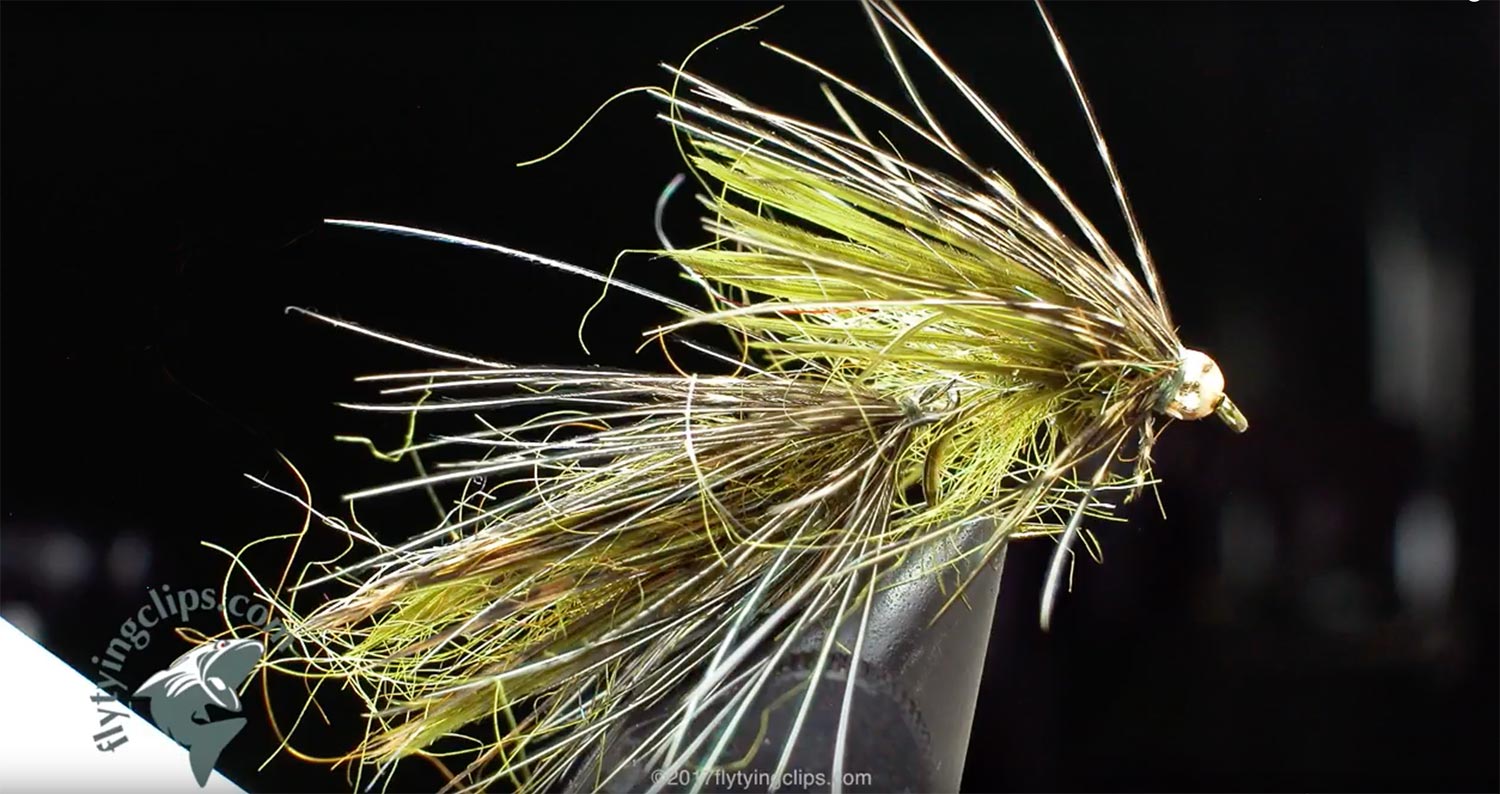
By Herman deGala
As with most of the flies that I design I was trying to solve a problem when I created the Articulated Aggravator.
I was looking for a fly that was different from what I was already fishing for smallies, amongst the riprap of a dam. I needed something I could throw into the face of the dam, which would drop as it followed the face of the dam, where the smallies are often hunting in the rocks looking for juvenile crawdads.
I also wanted the fly to have a lot of movement as it was stripped. I have noticed that the crawdads are not just one color but have a variety colors such as olive, orange, rust and even touches of blue. I wanted the fly to have a variegated texture like the crawdads on these rocks.
I was also looking for a material that was relatively cheap and available. I always get turkey quills, pheasant rumps and pheasant tails from my hunting friends during the season. I have always admired Jerry French’s method for tying composite loops and his use of materials. I wanted to use these techniques but needed a way to scale it down for my target species.
The answer was a simple
Read More »Choosing A Premium Fly Rod

By James Buice
The waggle. We all do it.
When you walk into a fly shop looking for that new rod (and yes folks, don’t even think about buying a rod before you cast it), the first thing you do after picking a prospective candidate from the rack is the waggle. Shaking the rod to check the flex, or stiffness, or…whatever. Some check the rod by placing the tip on the floor and observing the deflection. Some even hold the rod tip about a foot off the floor and raise the rod upward quickly to see if the tip touches the ground to see if the wand in question is “a fast or slow action.” Really!?!
Bottom line is no matter what you do in the confines of your favorite fly shop, you’re not going to be capable of making an educated rod buying decision until you line it up and “sling some string” as the kids say. But, there is a lot more to it than just casting blindly in a parking lot or casting pond. Have a game plan; a succinct list of criteria you deem necessary based on the rod’s purpose, your casting style, the type of gamefish you’ll be pursuing, and a realistic scenario in which the rod will be put to use.
THE LONG BALL DOES NOT ALWAYS WIN THE GAME
Having worked in a fly shop for years, I saw the same thing pretty much every time someone took a rod outside to cast. They would strip off all of the flyline at their feet and proceed to cast as much of it as possible. This would inevitably turn into the customer typically throwing tailing loops, snapping back casts, and throwing their arm out in an attempt to get the greatest distance they could muster. More accomplished casters would land the entire line straight, with graceful loops. This would be the extent of the test casting session.
“It threw the whole line.” “Wow, that rod has some power!” or “Feels like it doesn’t want to cast much past eighty feet.”
Great. These customers, no matter what their casting prowess, just showed their ability in casting a rod in parking lot for distance. Know what this told them about how the rod would fish in an actual, real life scenario? Zero. Zip. Nada. Sure it’s cool to bomb a long 100 footer, but aside from some very limited angling scenarios, simply throwing the entire fly line is about as useful as only practicing basketball shots from center court.
When you’re out shopping around, get the long cast out of your system and then focus on what really matters. Pick out a few spots on the ground at varying distances. If the shop has hula-hoops or something to use as a target, all the better. Place these at various distances ranging from 80’ to 10’. If it’s a trout pole you’re after, back it off to around 50 or 60 feet since you typically cannot control drag and fly line drift much past that in a river due to current breaks and such. This will put you in the ‘realistic’ casting ranges you’re going to encounter 99.9% of the time.
Now, don’t start out false casting and try to hit your targets. Begin each cast
Read More »Three Ways We Lose Fish
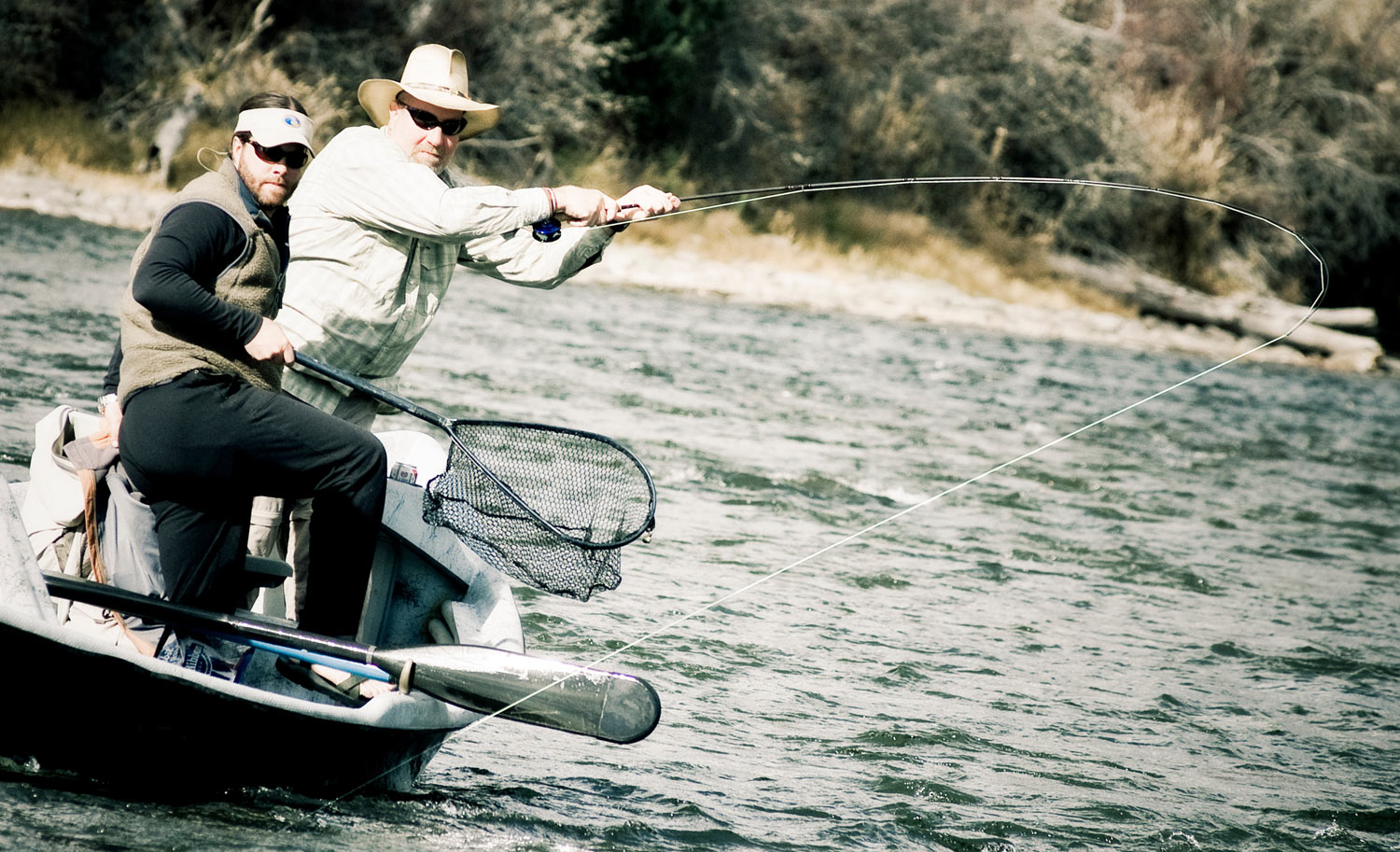
by Jason Tucker
DUSK FALLS SLOWLY ON A JUNE SUMMER EVENING.
Zach and I stood knee deep in the tannic flowing water of a Northern Michigan stream, the calls of the day birds urgent as they headed to bed, before the night birds emerged. We waited, the sky impossibly bright despite the late hour, as the mosquitoes whined in our ears. In the last of the Boreal light the first Hexagenia of the evening emerged. Still we waited.
A few minutes later 3 large brown trout began feeding just upstream from us. They were over two hundred feet away, and just when we start to move upstream to meet them, a small fish fed thirty feet above us.
“Let me feed him some Hex” I said to Zach, tossing a cast up, more a joke than a serious attempt at fishing. My fly landed, and was pulled down immediately in a great sucking gulp.
I set the hook and without hesitation the fish ran upstream and took half my fly line. It paused for a moment, gave three or four great shakes of its head and ran again upstream, taking the rest of my line and forty feet of backing with it.
I looked at Zach in the gloam and said “It looks like we have to go after this one”, lunging forward in the dark water. Even as I did, the fish took off once more and my leader parted. I stood there breathless and stunned. It had all happened so fast.
I was fishing my eight weight rod with a straight twelve pound leader.
There are a lot of reasons we lose fish, and we all have stories of that one that got away. Personally I’d like to have fewer of these incidents, though they do add a certain something to campfire storytelling sessions. I’ve been party to a lot of big fish being landed or lost over the years. Every year, I find I’m kicking myself over some stupid mistake I’ve made that results in the old Long Distance Release. While entire books could be written on the subject, I will focus on three of the most common causes of losing good fish.
Bringing a Knife to a Gun Fight
Very often we either stick to fishing our favorite gear, or we gauge our gear to catching small or average fish. That 3 weight is just fine on most brook trout streams until a big brown comes rolling out from under a log and crushes your fly, and then the battle is on, and frequently lost. Heavier gear is called for if you suspect you have a chance at bigger fish. A 5 weight may work just fine during the day on your favorite stream; late at night when much bigger fish come out you may need to go up to a six weight or heavier. There was a reason I was fishing an eight weight in that opening story, because we had been hooking and catching fish well over twenty inches. I’ll never know how big that fish was, but that night my eight weight felt under powered.
The same can go for your tippet size. My good friend Tom, an excellent angler and caster, told me a couple of years ago that he quit fishing tippet smaller than 4X. He was tired of breaking fish off on 5X. His reasoning was what good does it do to hook up on a fish if the tippet doesn’t survive the hookset or the fish? All you’ve done is needlessly lost a fly without accomplishing anything. Since that conversation I’ve started using heavier tippet and losing fewer fish.
If you’re after big fish at night don’t hold back. I don’t use anything less than 8 pound tippet at night and often go up to 12 pound. You can also shorten your tippet considerably at night.
You Aren’t Mentally Prepared
This is one of the most common mistakes I see– we hook up on a big fish unexpectedly and lose our shit. Never mind
Listen to the Fish
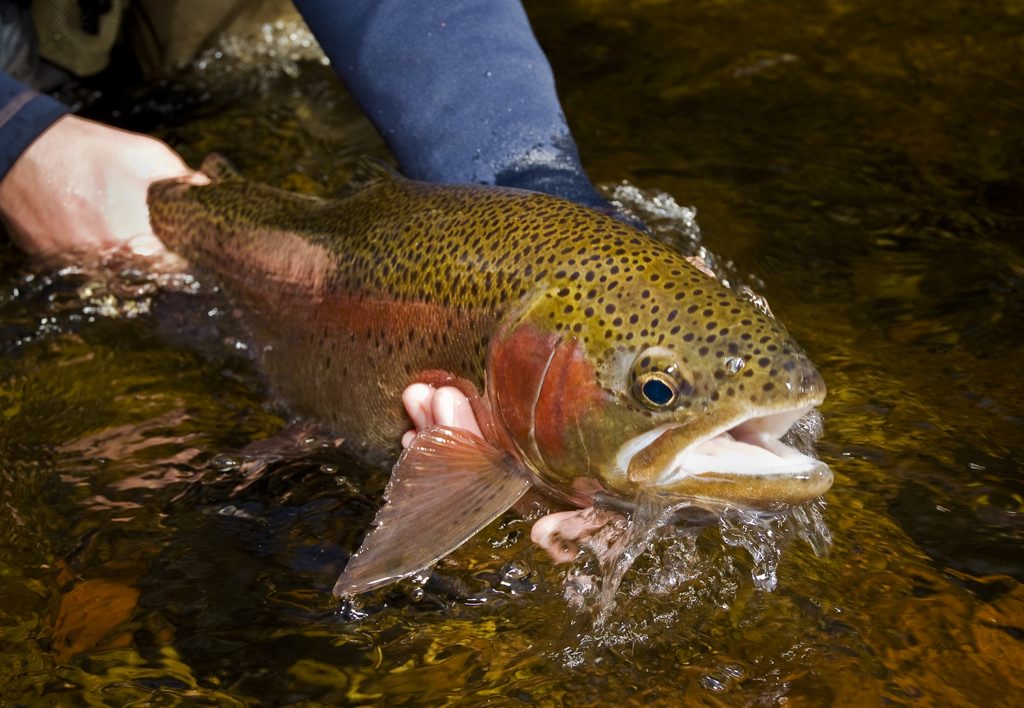
Sometimes all fly fisherman need to do to find success when their not having luck is slow down, and take the time to listen to the fish.
Trout can’t speak to us in words, but they do often provide us with subtle clues from their behavior that can help us catch them. That is, if we’re paying close enough attention to pick up on them. Not long ago, I was on the water guiding one of my favorite clients during an unusually cold early fall overcast day. A cold front had rolled in the night before and it had completely shut down all bug activity on the surface. There wasn’t so much as a single midge in the air, so we opted for drifting nymphs below the surface and began catching trout. As we broke for lunch, I noticed the clouds beginning to break up and the sun starting to find its way down to the ground in spots. Refueled, we headed up to a productive bend in the river to resume our fishing. As we crept down to the waters edge, I saw a large slurp from a big fish on the surface. It came at the tail-end of the bend, from a bath tub sized spot where the sun was shining down on the water. Both of us froze in total shock and amazement. It was the first surface activity we had seen all day and we waited with anticipation to see if the big fish would rise again. A few minutes went by with nothing. I scanned the water to see if I could see what the big fish had taken on the surface, but I saw no signs of food drifting in the current.
Convinced, the big fish rise was an omen, I snipped off the nymphs, added a couple feet of tippet and tied on a big black foam beetle. I handed the rod to my client and instructed him to quietly get into position and present the beetle slightly upstream of where the big fish rose. He obliged with a perfect cast and we watched the beetle intently as it began slowly drifting through the big fish’s kitchen. Nothing happened at first, but just when both of us were about to give up on the drift, we saw a large wake heading downstream towards the beetle. Next, a huge head broke the surface with jaws wide open and the beetle was devoured. God save the queen, the hook was set and we battled the fish up and down the river for several minutes before bringing that vibrant red-striped 24″ rainbow trout to the net. That fish was absolutely beautiful but the take was even more. I’ll never forget being abel to stare down the mouth of the fish just before it chomped down on the beetle. It was a front row seat to an amazing rise that you don’t see very often.
Here’s the funny part. We worked our way upstream fishing that beetle in several more spots just like the one that produced the big rainbow, but it produced no take, not even a single follow. We eventually snipped off the dry and were forced to fish subsurface again to resume catching fish. Next time you see a random rise on the river and you’re rigged up with nymphs, I don’t care how horrible the dry fly conditions are, listen to what the fish is trying to tell you and tie on a dry fly. Doing so, you may experience the same success we did. It doesn’t work all the time, but more times than not.
Examples of fish language
Read More »Camera Care in Saltwater
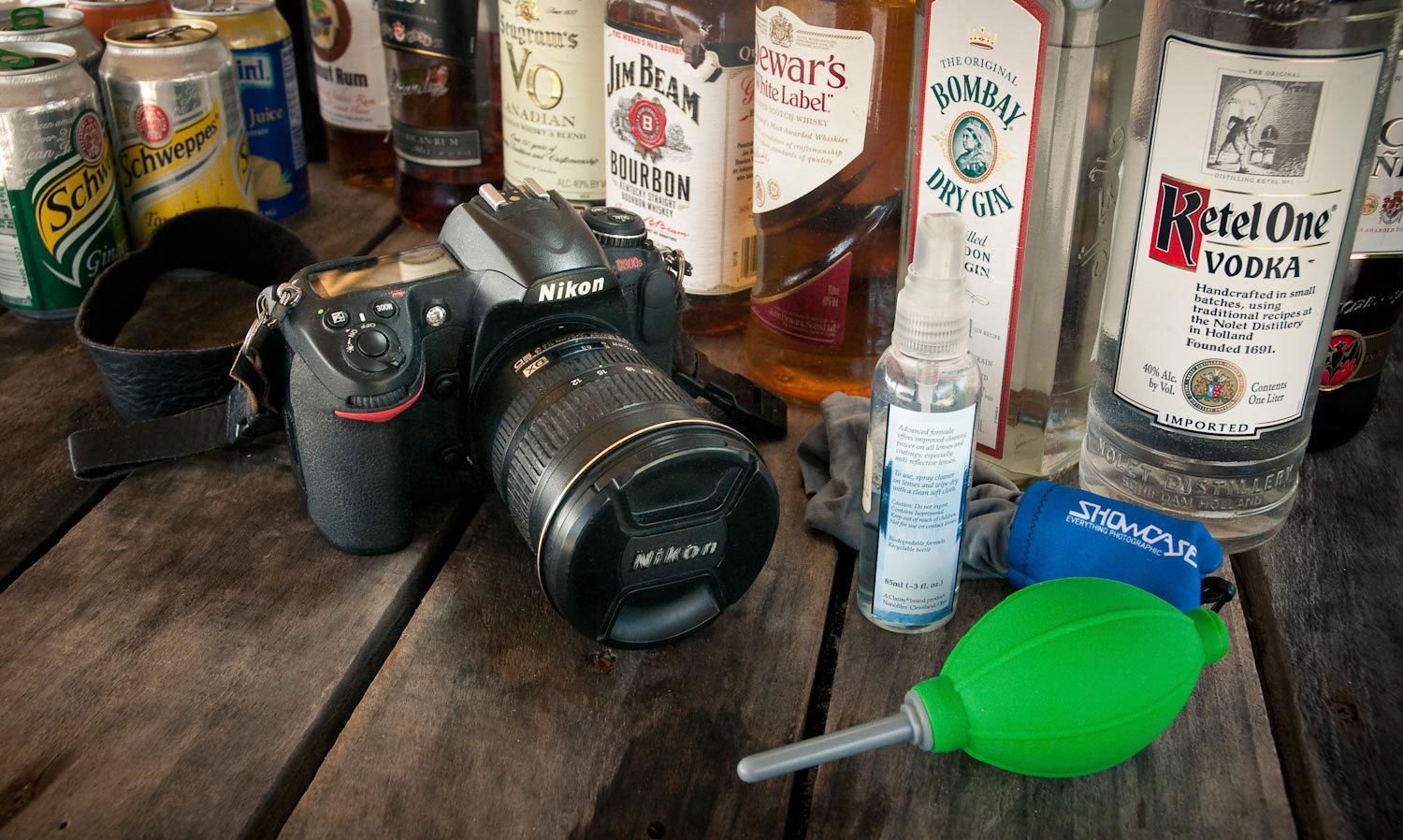
My cameras take a beating. On a trip to the Deschutes I dunked my Nikon D300s so badly that when I took the lens off, water poured out of the body. I was sure it was done but I pulled the battery out and set it in the sun and after a few hours it came back to life. The lens needed repair but the body seems fine.
I’m not recommending that you take your camera for a swim but good quality DSLRs like Nikons and Canons will take a lot of punishment. The one thing they can not take is salt water. I got away with a little dunk in the Deschutes but the salt spray and even the air in the Keys or the Bahamas can be deadly.
When I’m working around salt water I take great pains cleaning my gear.
You Can Be In The 10% Of Steelheaders Who Catch 90% Of The Fish
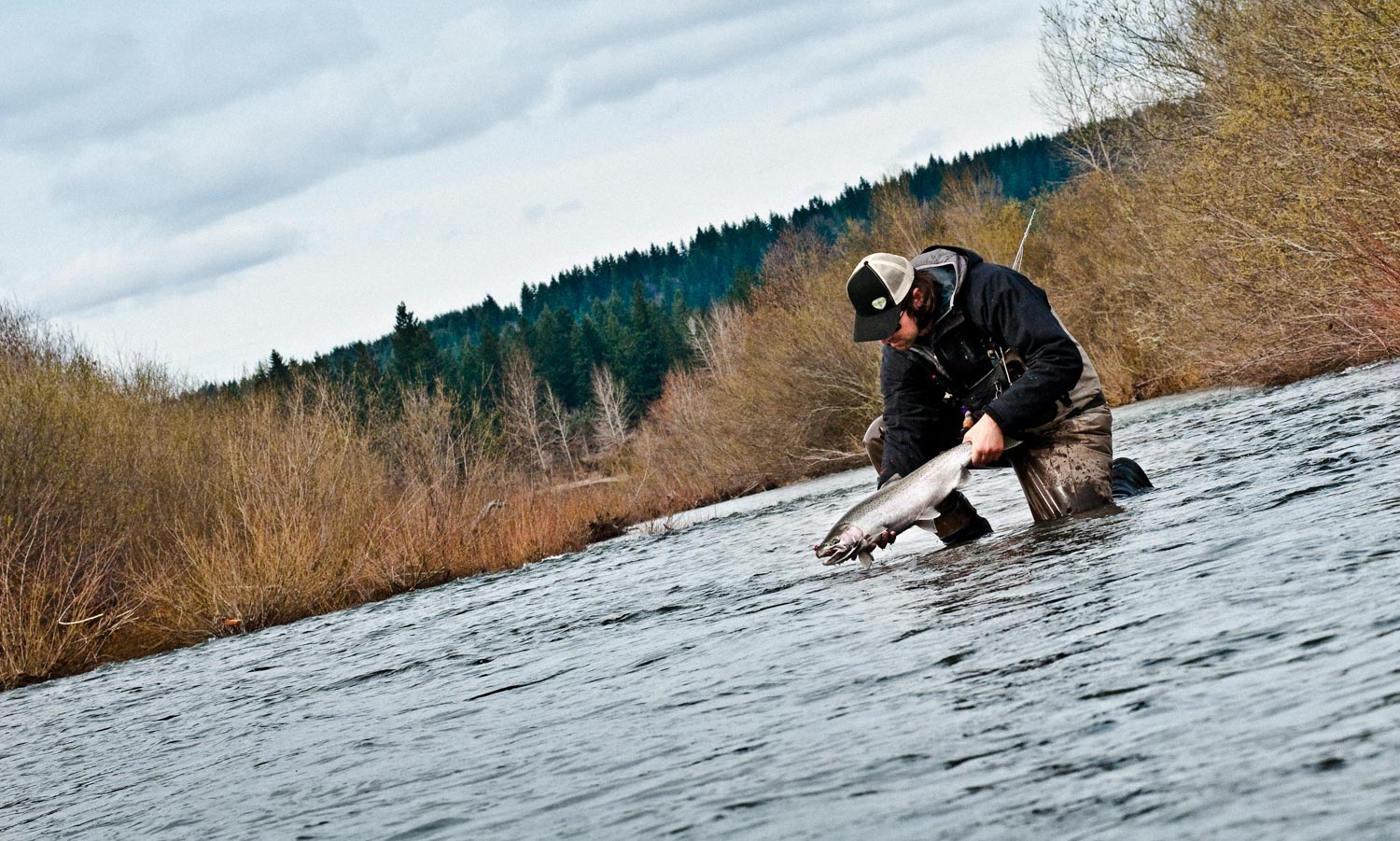
YOU’VE HEARD THE OLD ADAGE; 10% OF THE FISHERMEN CATCH 90% OF THE FISH.
I had a client ask me just the other day if I believed in that. “Absolutely” was my response. He then asked how many days would he have to spend with me to be in that 10%. I laughed and told him he already was. Simply by going with a guide you are likely in that 10%. But many aren’t fortunate enough to afford fishing with guides. So what is it that makes those 10% catch so many more fish than the other 90%?
In regards to swinging flies for steelhead there are three key things I have noticed that directly equate to success.
Being in the right place at the right time:
Of course fishing the right river, in the right month, and concentrating in the runs that are the best holding water will maximize your odds. Which holding water is best, changes with the seasons and as the river levels and conditions change. Concentrate your efforts in the best spots or section within the run.
Some big runs are great, but fishing them top to bottom could take several hours. Is that the best use of your fishing time? Some spots fish well in the morning, some fish well in the evening and some fish well midday.
In general, steelhead bite best when they are holding and fresh. Bumps in the water level and low light causes them to move and travel. Dropping water levels and bright light causes them to hold. Experience tells you where and when you’ll find them.
For beginners, swing your fly in water that is walking speed and 2-6ft deep with structure. For no apparent reason steelhead like certain runs and holds, and others that look good they don’t seem to like. So fish good looking water, but if it doesn’t yield results after several trips you might want to try elsewhere. Play your odds, don’t waste time fishing where they aren’t likely to be.
Maximizing the time your fly is in the water:
Efficient casting keeps your fly in the water where it could get eaten. When you are struggling with your cast it’s easy to keep recasting over and over because you’re not satisfied with your cast. Or to start the next cast before the swing is completed because you are anxious to correct casting mistakes.
The better your cast, the more time your fly will have to fish. A long cast often doesn’t increase your fly’s fishing time, especially not if
Read More »Small Flies For Big Steelhead
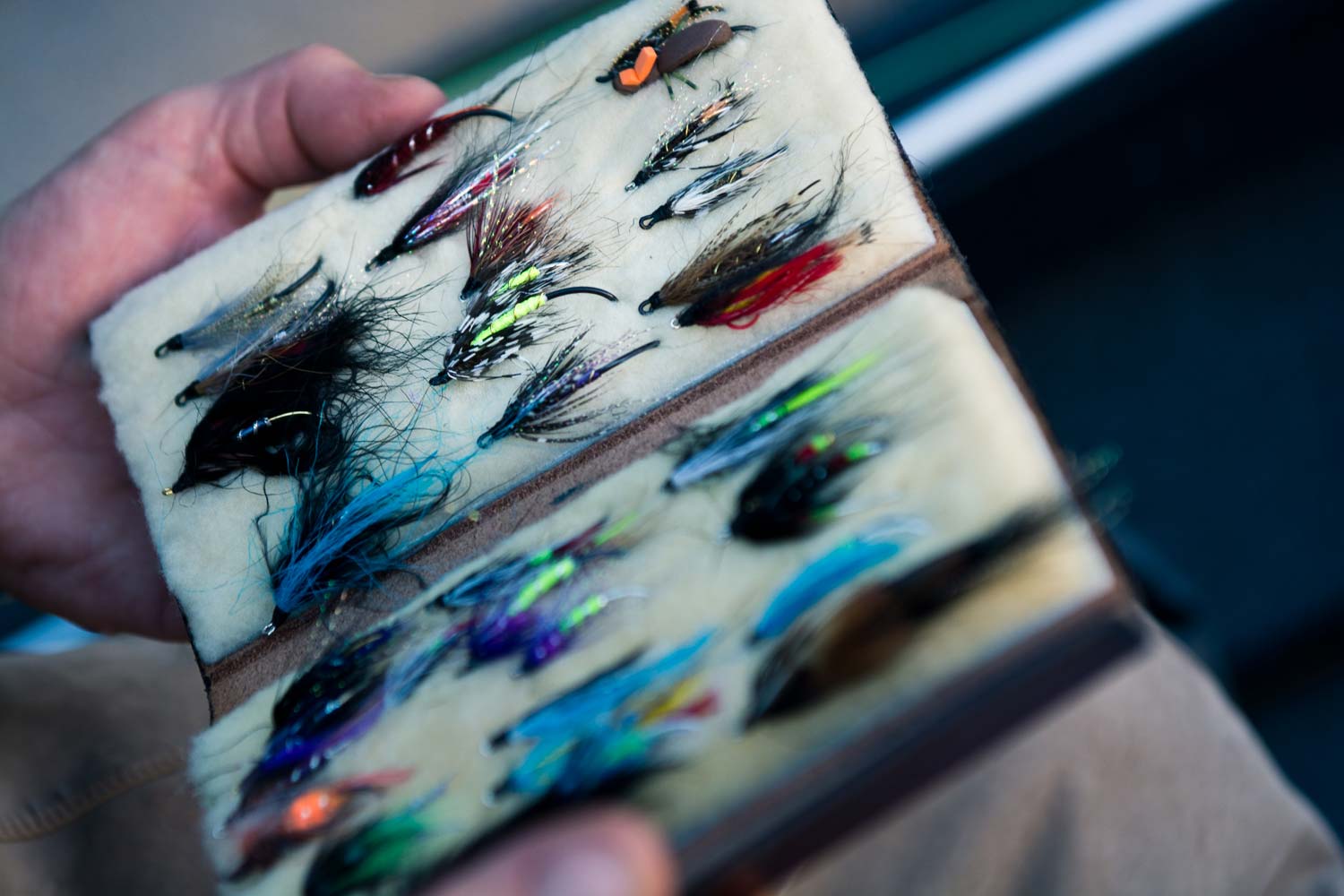
“Most people think, to catch a big fish you have to tie on a Woolly Bugger.” – Christopher Guest
Every year some fly fishing magazine publishes an article about fishing small flies for big fish. The quote above, from Christopher Guest’s 2000 film “Best In Show,” cracked me up because I had read the article in Fly Fisherman that he went on to quote word for word. If you are not familiar with the film, I highly recommend it.
I wouldn’t say it’s news that small flies catch big fish. Of course, big flies catch big fish, too, and an effective angler is the one who knows how to match the size of their fly to the conditions. Fly size alone is not a guarantee of catching fish, large or small. When it comes to summer steelhead, there are some pretty good reasons to consider sizing down.
It’s pretty well documented that summer run fish will eat flies who’s size might be more associated with resident trout. There are plenty of theories about why that is. I’m a pragmatist, and I think it’s likely they eat them for the same reason the trout do. Because they more accurately resemble what the fish see around them.
Fishing a big squid pattern to a winter fish, who has likely only been in fresh water for a day or two makes sense. Summer fish spend months in the river. They wouldn’t have seen a lot of squid around but they are likely seeing a lot of aquatic insects in the size 4-8 range. Unlike trout, the steelhead is not feeding, but it would be foolish to think that flies are the only thing they are snapping at. For whatever reason they bite, they bite what’s at hand, so imitation makes sense.
Small flies, especially on a floating line, are a pleasure to cast, which is reason enough to give them a try. The main reason I like fishing these flies on a floating line is the way
Read More »A Closer Look / The Large Mouth Bass
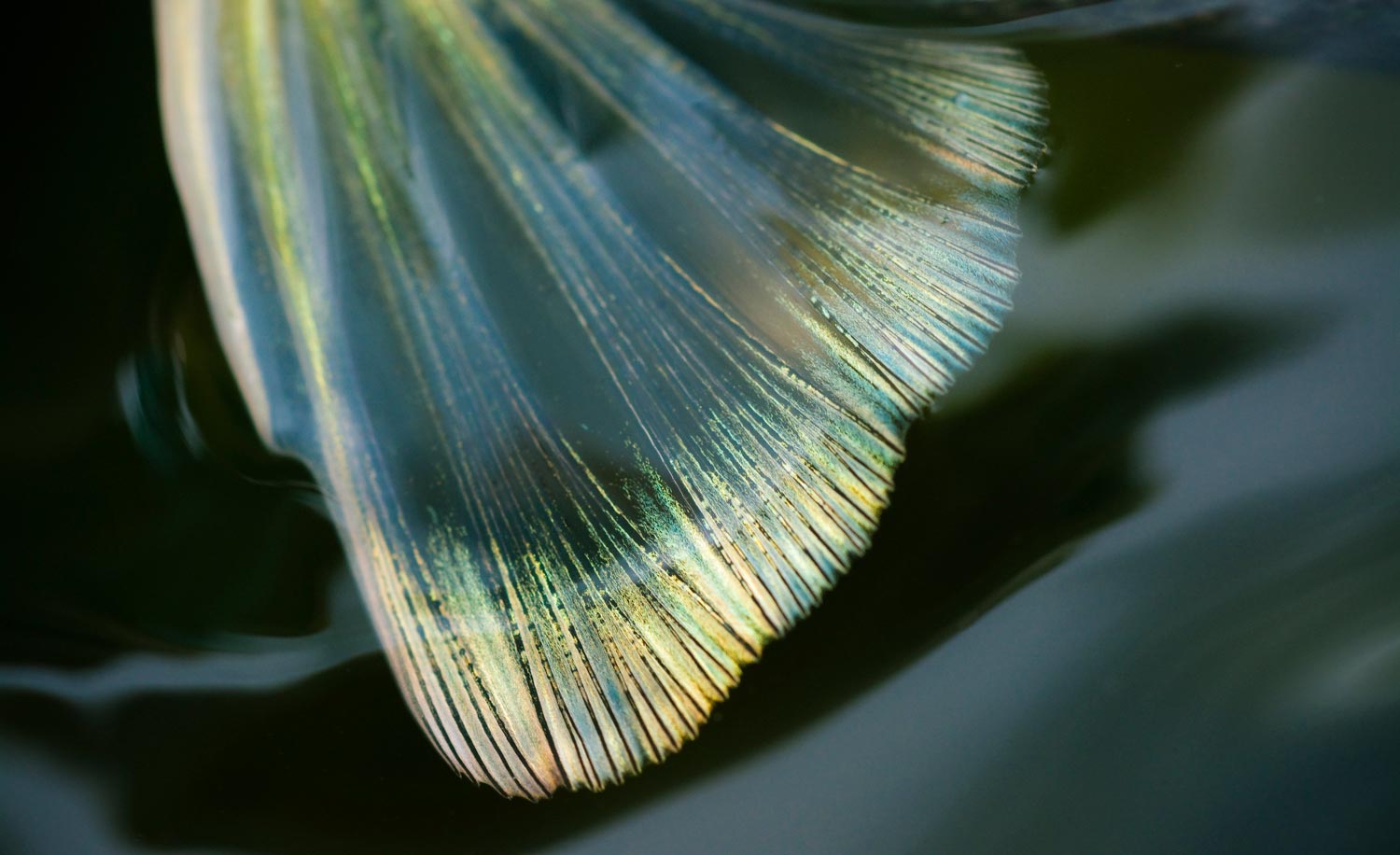
I’M GUILTY.
I have called them ugly fish. I have shown a lack of interest in bass largely due to their color palette. Then, just the other day I noticed the fin on this large mouth.
I’m a big enough man to admit when I’m wrong.
Read More »The Permit Story
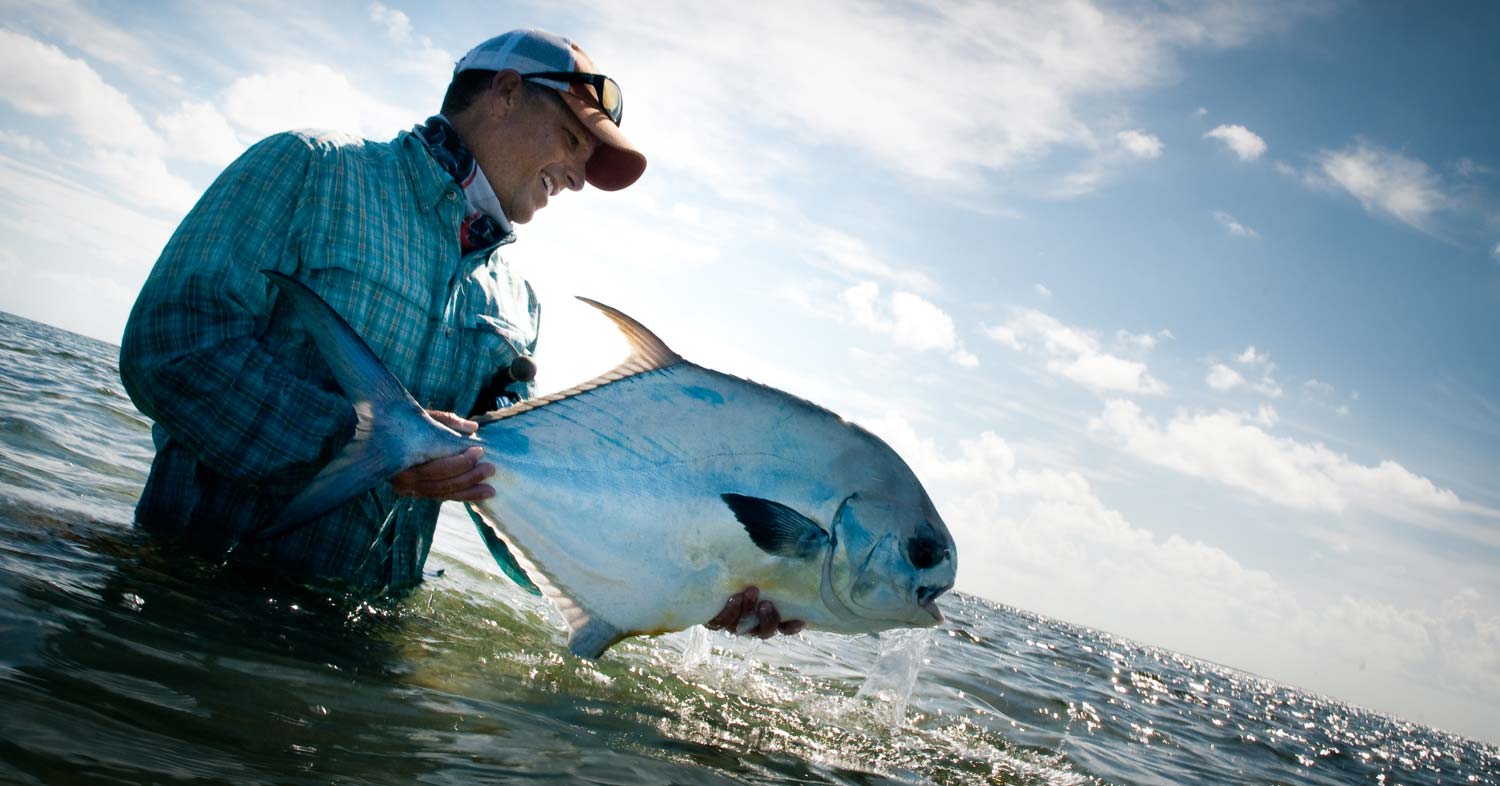
By Louis Cahill
Stop me if you’ve heard this one, and if you’ve spent any time fly fishing salt water, you have.
I was talking with my buddy Bruce Chard yesterday. Thank God for living vicariously through my friends! Since I’ve been dealing with multiple eye surgeries, I haven’t touched a fly rod in five months. I haven’t been five days without casting a rod in twenty years, so I’m losing my mind and talking fishing with my friends is the only thing that keeps me going.
My buddy Scott had just sent me a photo of a friend of his with a huge permit. He was holding the rod, holding the permit and grinning like a cheshire cat, was Bruce. Just by chance, Bruce called me with in the hour, so I had to get the story. The story was not only familiar but a little disheartening.
This guy had never fly fished. He was in the keys visiting family and his brother-in-law had Bruce booked for the week and gave one of his days to this guy and his wife. Bruce poled them around a little and when they started losing interest, he took them to some nice spots to snorkel and picnic. I’m sure they had a blast but it makes me want to bang my head on the wall. You booked one of the best flats guides on the planet to take you snorkeling? OK.
“We’ve got about an hour left,” Bruce told them, “Why don’t we go check out this permit flat.”
Bruce was thinking he’d at least do a little scouting for the next day when he would be fishing his client who generously offered his day to these folks. A guy deserves a permit after such a gesture, right?
Bruce poles up on the flat and, as soon as they are ready to fish, he sees a permit swimming right to the boat from six O’clock. Not an ideal shot and no time to turn the boat.
“Throw that thing out as far as you can behind the boat,”
Read More »The Errant Cast
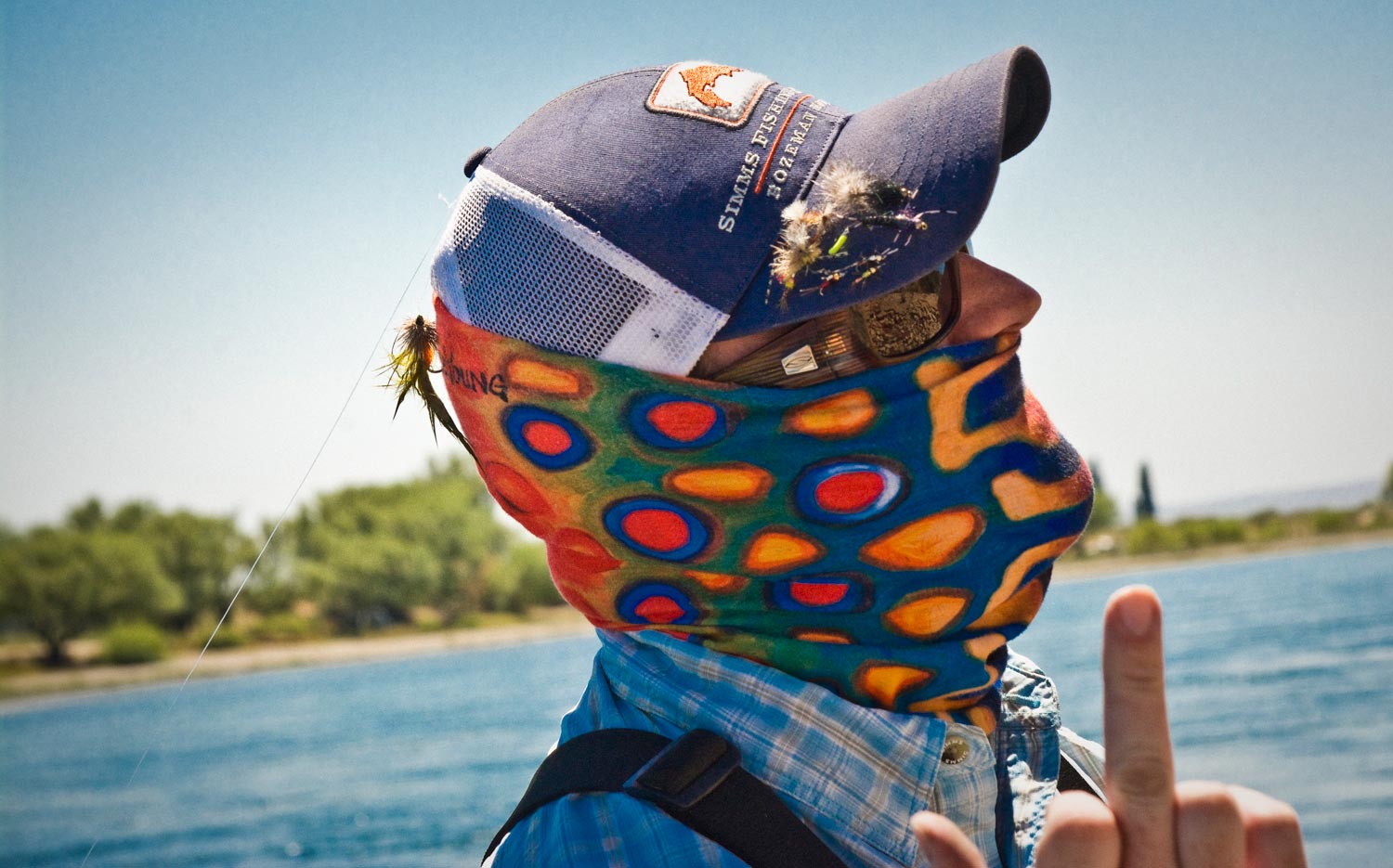
Why do we do that?
While on our latest fishing trip I brought up a rather interesting subject that I just don’t get.It was windy. Like 20-30mph windy. And to add insult, the wind was blowing right into my casting shoulder. I had just made a shitty backcast and knew that it would only translate into a shitty cast, likely causing the fly to tag me along its way. Even with this thought working through the innards of my mind I still ripped a double hauled cast that Steve Rajeff would be proud of, sending the fly screaming into my back. Shit Damn Piss! Seriously?! The streamer was stuck in the back of my shirt, and as Louis removed it, I posed the question… Why do we do that? We know when we’ve made a crappy backcast, and we know that when we follow through on our forward stroke that it’s going to be a horrible cast, and possibly inflict pain. So why the hell do we still make the damn cast?!
IN MY ENTIRE CAREER, I CAN’T THINK OF ONE TIME I MADE A JACKED-UP BACKCAST AND THEN DECIDED TO ABORT IT BECAUSE I KNEW THE OUTCOME WOULD LIKELY BE LESS THAN DESIRABLE.
Instead I just keep on trucking and hope the “chuck n’ duck” will suffice.
I mean, I’ve been brought to my knees from these errant casts. One of the worst occurred on a windy day at a local pond. I was fishing a #2 Clouser Deep Minnow. You know… the one with large, lead eyes and a big stainless steel hook. The wind was blowing right into my right shoulder at a pretty good clip. I made my backcast… Nope, no bueno. As I completed this totally awesome cast, this Clouser proceeded to rip
